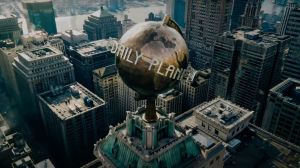The Star Wars saga is known for pushing the envelope when it comes to crafting special effects, with The Mandalorian seeing some of the most advanced techniques yet seen in the series, though some of the more impressive effects were crafted with traditional visual effects methods. The titular hero’s ship, the Razor Crest, was crafted using practical techniques and physical models, partnered with motion-control cameras, as chronicled in the above new featurette. Learn more about the complicated process in the video above and check out the all-new season of The Mandalorian when it premieres with more adventures on Disney+ on October 30th.
Videos by ComicBook.com
ILM described the featurette, “Join us as we journey behind the scenes of the Emmy Award-winning visual effects behind the first season of The Mandalorian. We’ll pull back the curtain on one of our favorite bounty hunter’s ship, the infamous Razor Crest, and look at the distinctive former military ship from its initial concept design in Doug Chiang’s Lucasfilm art department through to ILM artists building the ship in the digital realm and as a practical miniature for filming. We’ll also look at the parallel development of the custom motion control camera system created by ILM Visual Effects Supervisor, John Knoll to allow for the first motion control shots to film at ILM in 15 years. We hope you enjoy this look ‘Inside ILM.’”
In the new season of the series, The Mandalorian and the Child continue their journey, facing enemies and rallying allies as they make their way through a dangerous galaxy in the tumultuous era after the collapse of the Galactic Empire.
Another exciting development with the series was its use of a nearly 360-degree digital backdrop, which used a gaming engine to change perspective in real time. Various lush backgrounds could be pulled up and immerse the actors in an otherworldly setting almost immediately, which would help convey the necessary lighting conditions for each locale. While some real-world locations and sets were utilized for larger sequences, being able to use these digital backdrops expedited the entire production process.
Additionally, the contained nature of each set proved so effective that, as studios struggle to cope with the coronavirus pandemic and ensuring proper safety protocols, this new approach to visual effects will help studios more closely monitor the cast and crew.
Season Two of The Mandalorian debuts on October 30th.
Did you enjoy the series’ effects? Let us know in the comments below or contact Patrick Cavanaugh directly on Twitter to talk all things Star Wars and horror!









